Day 1 of a three day Summer Tour. It was a nice sunny day, with just some patchy cloud at times, and pleasantly warm with a maximum of 18C. It was still a bit breezy first thing, but the wind dropped through the morning. We spent the day in NW Norfolk.
Our destination for the morning was Snettisham. As we got out of the minibus we could hear a Greenfinch singing nearby. A Great Spotted Woodpecker flew in and landed in the top of a conifer behind us. As we walked into the Country Park, there were several more Greenfinches feeding on the short grass and Chiffchaff and Blackcap singing. We stopped to watch a female Broad-bodied Chaser dragonfly basking on a twig, making occasional feeding sallies out but always returning to the same perch.
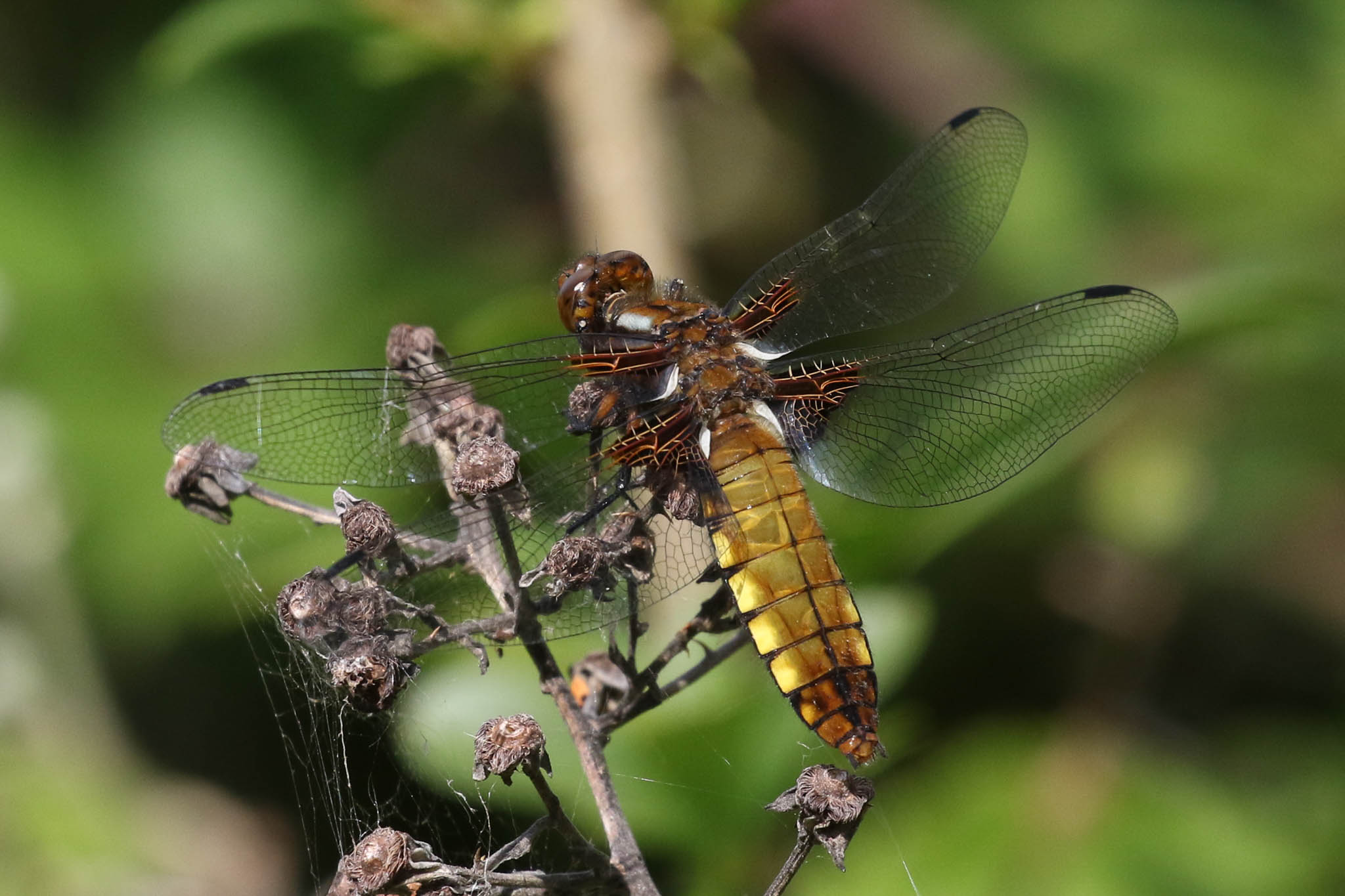
A Turtle Dove started purring behind us, so we walked back and cut across through the reeds. It was perched on one of the telegraph posts but then launched into a display flight, flying up and spiralling back down, landing on the next post over, where we got it in the scope.
We crossed back over and up onto the seawall next, to have a look out at the Wash. The tide was going out and there was already a lot of mud exposed. A Curlew was feeding not far out from where we were standing and lots of Oystercatchers were scattered right along the shore. There was a good size flock of Sanderling to our left, and a much bigger flock of Dunlin with more Sanderling mixed in away to our right. We could see the black belly patches on the Dunlin.
A female Common Blue butterfly was feeding on low hawkweed flowers on the bank, and lots of Silvery Leafcutter bees buzzed around our feet.

Continuing on our way north through the park, two Marsh Harriers flew round over the reeds in the middle. We could hear a Cetti’s Warbler calling in the brambles and another singing further up. A Sedge Warbler was only half singing, and we realised it was busy feeding its young in the bushes. A Lesser Whitethroat flicked across in front of us and disappeared deep into the hawthorns.
Out in the more open area, several Linnets, Goldfinches and a Chaffinch were feeding on the seed put down on the ground. A pair of Stonechats flicked ahead of us – there were lots here today, we saw four streaky juveniles feeding on the ground a bit further up and two more pairs further up. A Common Whitethroat sang from the dead branches in the top of the willow and another flew out from the bush underneath where a pair of Stonechats.
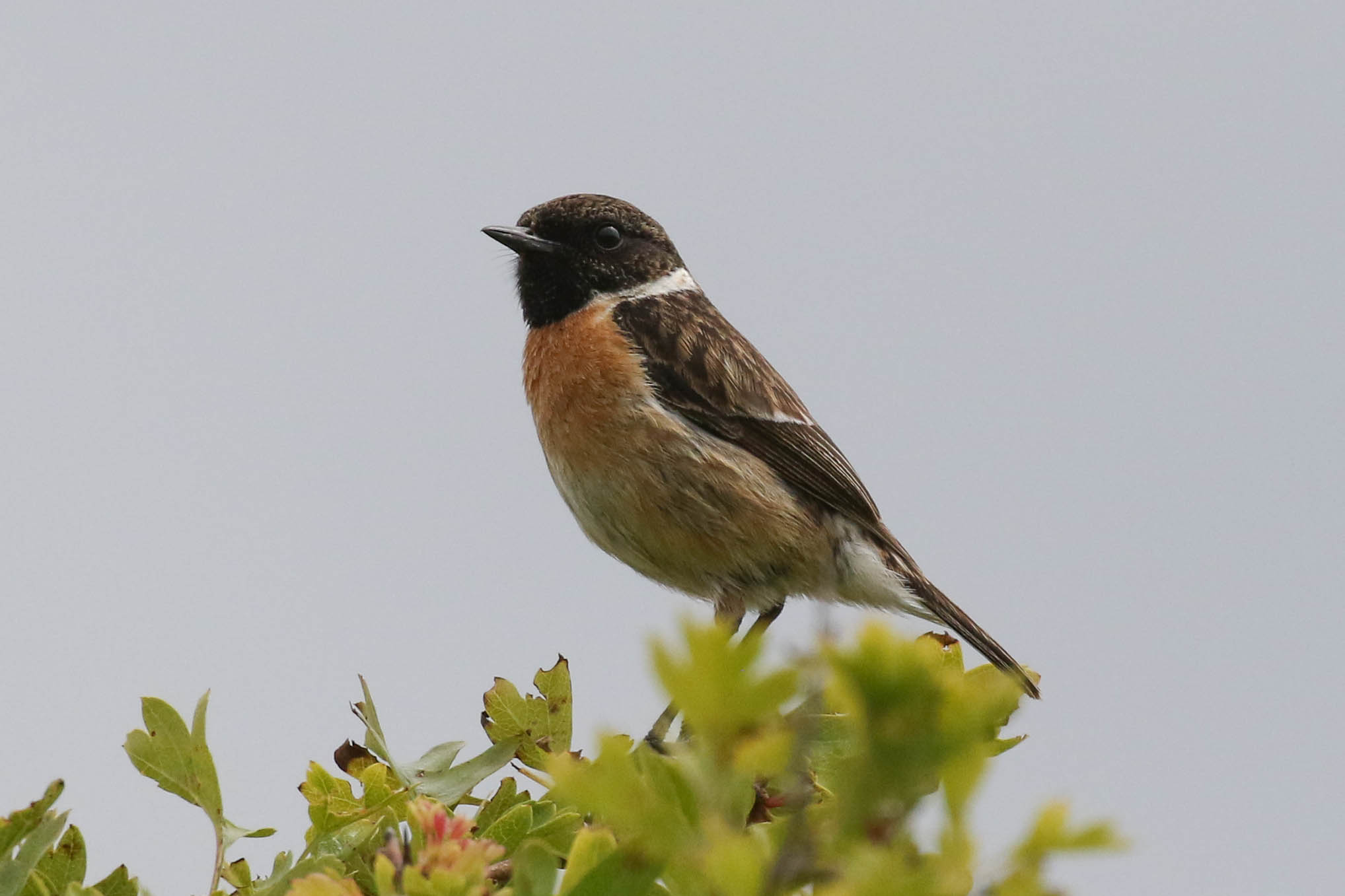
There were more Silvery Leafcutters on the seawall further up, and as we walked past another bee came up and flew a short distance along the path ahead of us before landing. It looked different and now we could get a good look at it – it was a Large Sharp-tail Bee a brood parasite which lays its eggs in the nests of leafcutter bees. An Emperor Dragonfly was patrolling up and down the seawall here too, our first of the year.
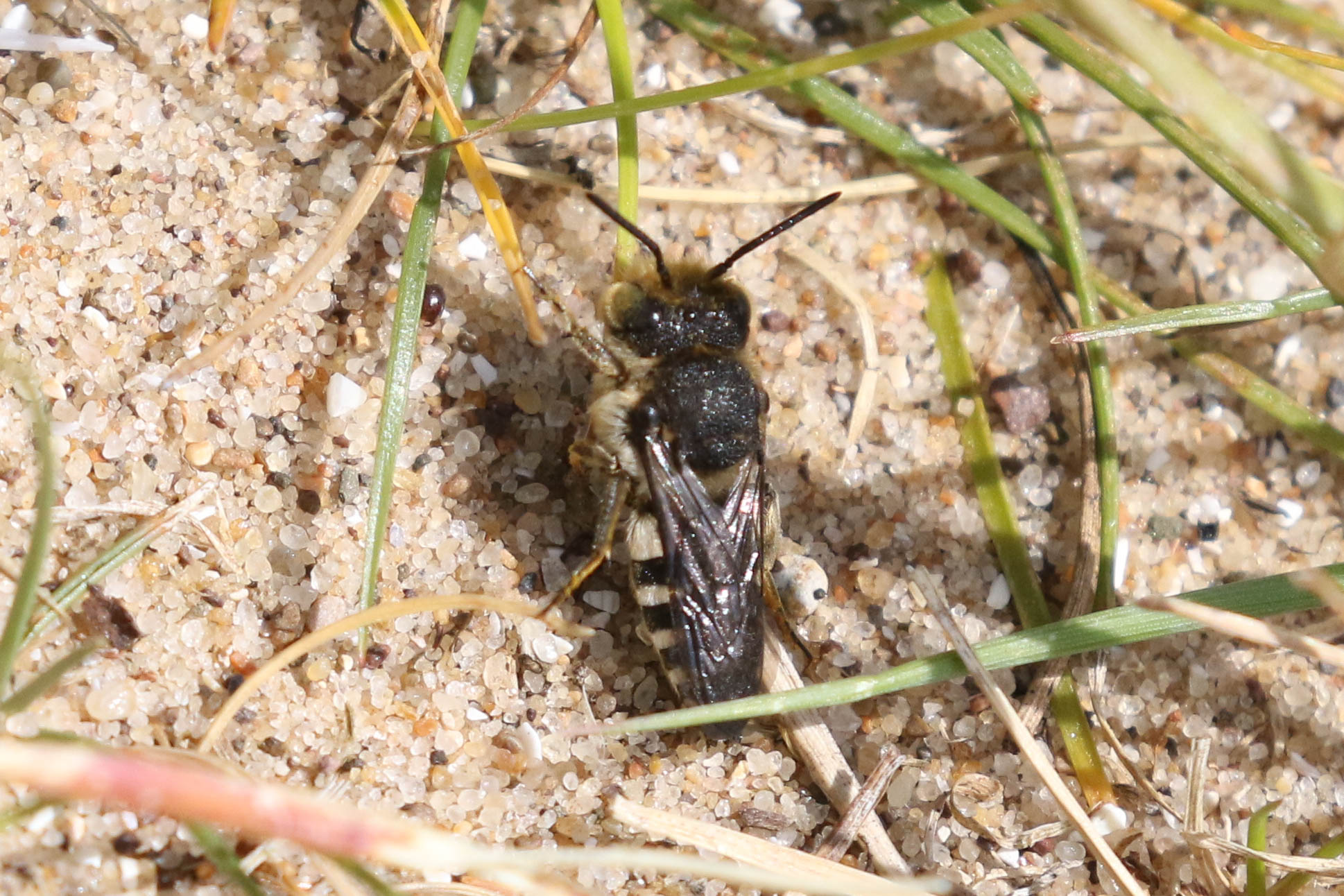
From the top of the seawall, we could see a Ringed Plover on its nest. It had been covered with a protective cage, and was in one of the fenced off areas – hopefully enough to allow it to raise a brood successfully. An Oystercatcher was asleep on the shingle next to it.
The surprise of the morning at this point was seeing a Barn Owl still out, hunting over the inner seawall. It disappeared off north and just a little while later came back south with a vole in its talons. We watched it fly off over the marshes towards Ken Hill Wood, where presumably it had hungry young to feed, which was forcing it to hunt during the day. Not long afterwards, it came out again, over the marshes towards us before disappearing off south.
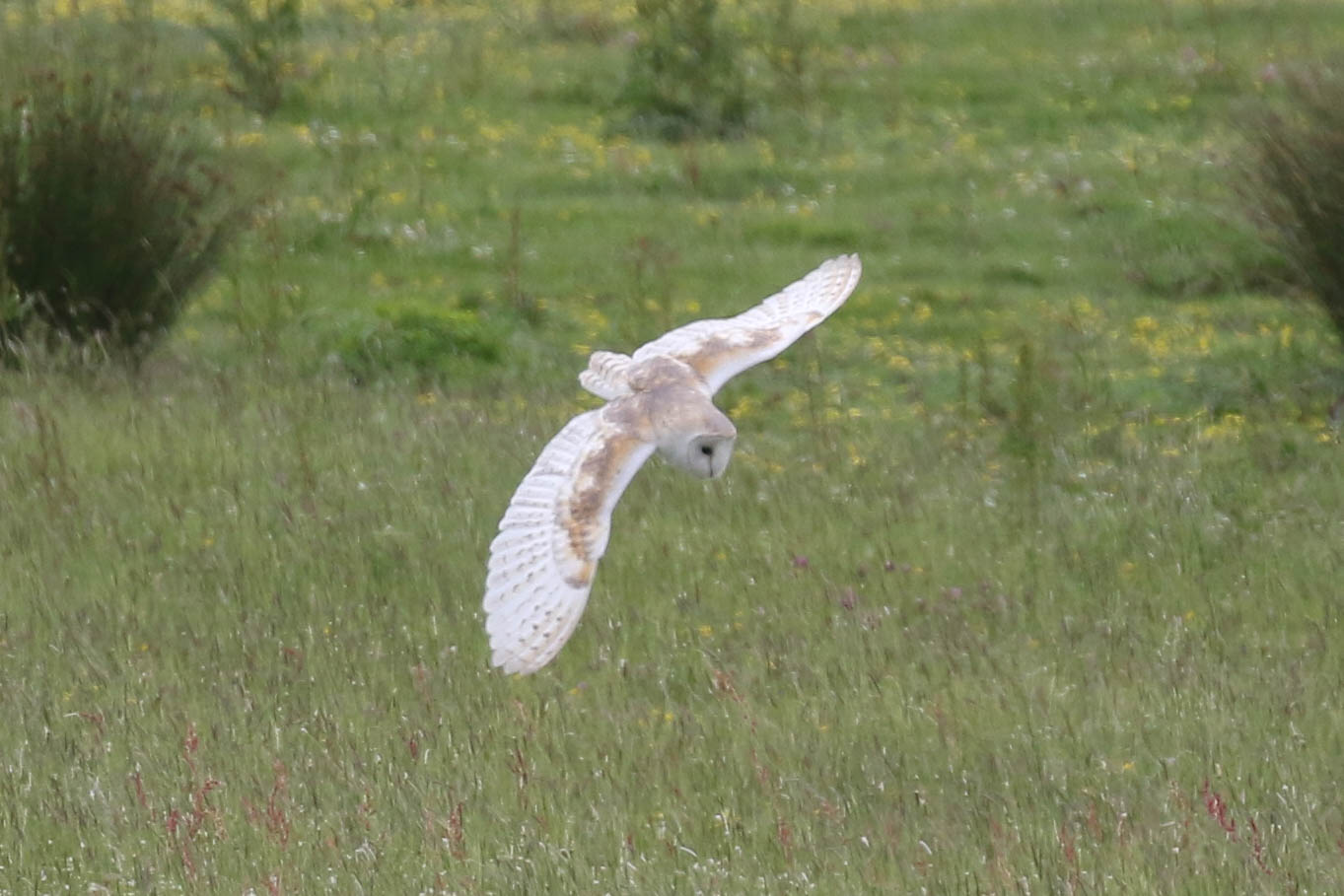
Cutting across to the inner seawall, we could see a Tufted Duck and a Cormorant on the pools. Despite it being late morning now, we could hear the Great Reed Warbler singing as soon as we got up onto the top of the bank. Scanning the reeds carefully, we managed to pick it out, albeit partly obscured, looking through the tops of the reeds, so we got it in the scope.
Someone walking back told us there was a better view of the Great Reed Warbler from further up, so we walked on and looked back down the line of the ditch. It was indeed showing well, a much better view from here. We had a good look at it perched in the reeds, singing. Then it flew down along the ditch towards us, flicking around low down in the reeds out in the open. Eventually it flew back to where it had been and disappeared in.
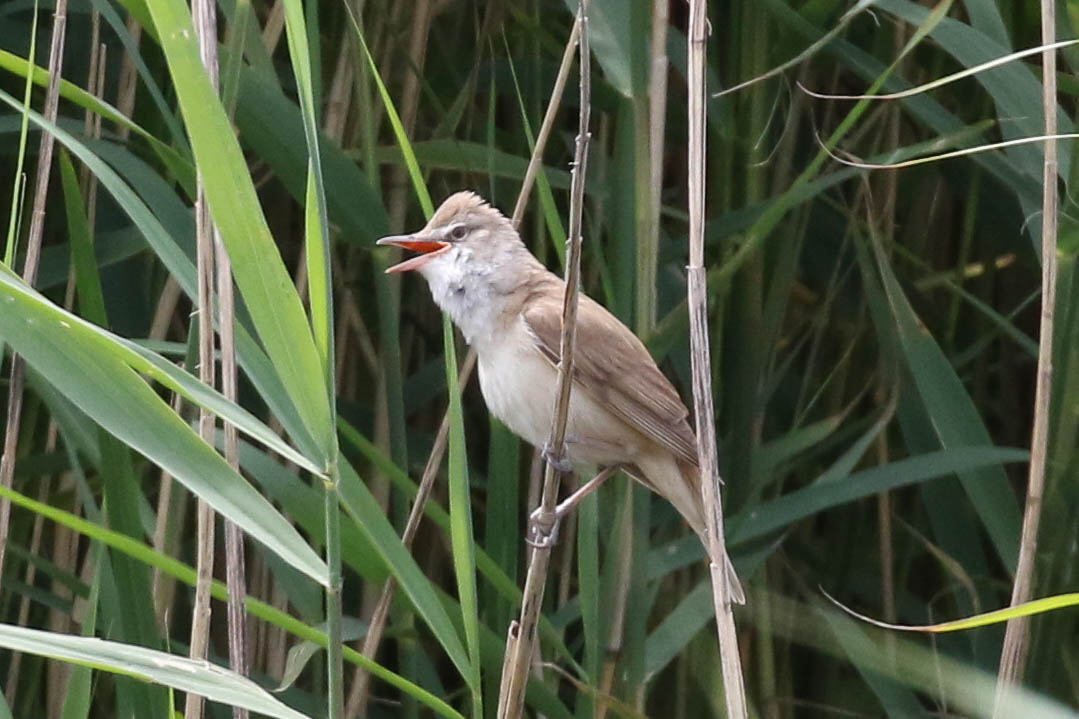
There were more Marsh Harriers over the marshes and we could see several Avocets and Lapwings out on the overgrown pools. We had a better view of a pair of Avocets on the small pool behind us. One of the adults was sitting on the nest, brooding a couple of very small juveniles, while another youngster was standing next to it, very unsteady on its feet. A Meadow Pipit landed on the path ahead of us.
On the walk back, we stopped to watch seven Spoonbills on one of the pools. There were two juveniles, one immature, and several adults with yellow-tipped black bills and shaggy nuchal crests. The juveniles were more active than the others, at first feeding in the shallows before one of the juveniles started begging to be fed by one of the adults.
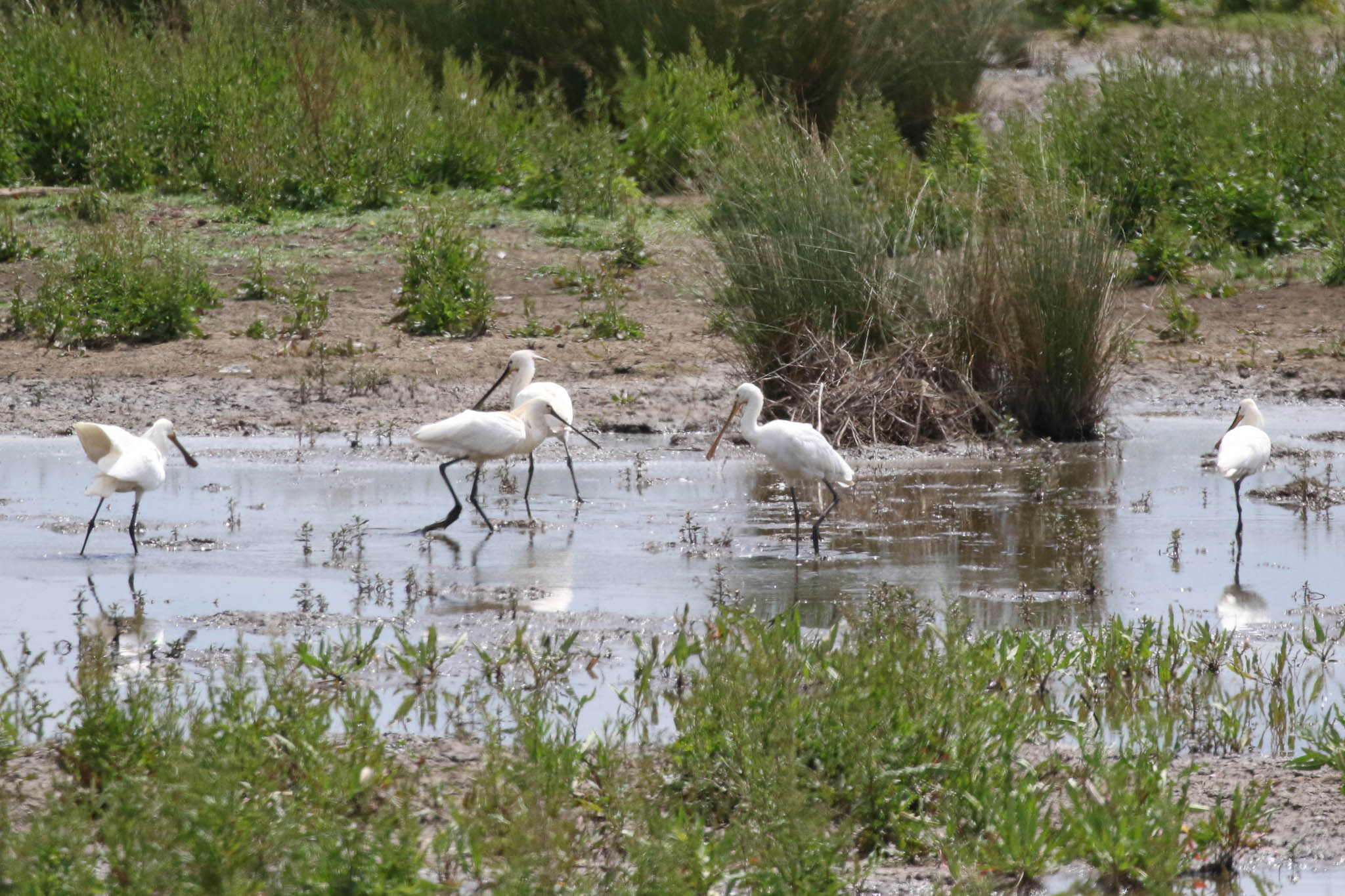
When we eventually got back to the minibus, we made our way round to Titchwell. It was time for lunch, so we ate in the picnic area and afterwards headed out onto the reserve. A Red Kite drifted over the reedbed, and had a brief tussle with a Marsh Harrier. A Hobby was hawking for dragonflies over the back of the reedbed, circling up then zooming down low towards the water. It landed in one of the dead trees where we got it in the scope, although there was quite a bit of heat haze from here.
A young Mediterranean Gull flew overhead and out towards Thornham. We could hear a rhythmic Reed Warbler singing, and saw several Sedge Warblers flitting in and out of the vegetation below us on the bank. The reedbed pool had a single Great Crested Grebe. A Norfolk Hawker dragonfly was patrolling around one of the pools below the bank and a Common Pochard with seven ducklings was on one of the others, a scarce breeding bird here so always good to see.

We had our first scan of the Freshmarsh from the bank before Island Hide – we could see several juvenile Avocets and a pair of Common Terns on the islands in front of the hide. Further up, an adult Mediterranean Gull was bathing on the water with a few Black-headed Gulls. We could see three Sandwich Terns and a Bar-tailed Godwit on the back of one of the islands further along.
We walked a bit further up and had a better view of the Mediterranean Gull from here, a smart adult with jet black hood, bright red bill and pure white wing tips. After a while, it had a fly round and landed on the island in with the Black-headed Gulls, giving a nice side-by-side comparison.
The breeding season is already over for many of the ducks and they are already moulting – several Common Pochard and a pair of Shoveler were loafing on one of the islands, the drakes already looking quite patchy. A Common Redshank flew over displaying. There were more juvenile Avocets on the new bund and lots on the next compartment where the water level is lower – it was a veritable Avocet creche! It has been a record-breaking year for Avocets in Titchwell, with 97 nesting pairs, reaping the benefits of all the work done to the Freshmarsh last autumn.
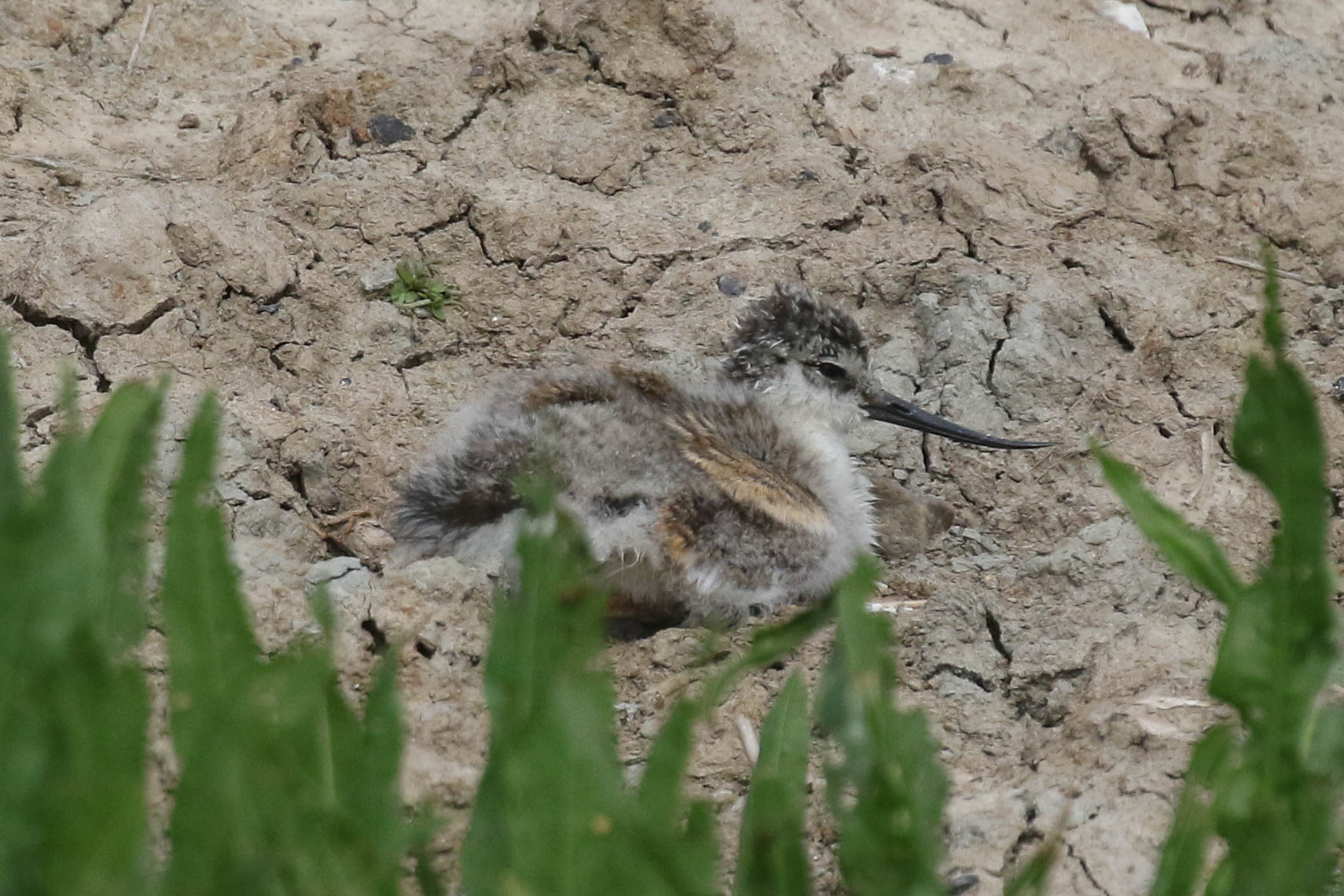
Round at Parrinder Hide, there were a few Pied Wagtails and a Meadow Pipit on the mud in front. Four Little Gulls were swimming around one of the islands further back, all 1st winters. A Great White Egret was feeding along the back edge. We couldn’t find any Little Ringed Plovers today, but we did see two Ringed Plovers on the grassy island out to the right of the hide.
We set off to walk out to the beach next. There was not much on Volunteer Marsh, with the tide coming in fast up the channel. Out at the Tidal Pools, several Turnstones were roosting on one of the islands. A Common Tern hawking up and down right in front of us. Several times it plunged into the water but came up empty-billed. A Little Tern was resting on the mud spit right at the back, a distant view through the scope. As we walked on, it took off and flew in giving us great close flight views.

Out at the beach, the tide was in. A small group of Oystercatchers were roosting on the shore a little further up. One or two distant Sandwich Terns flew past, and we picked up a distant Gannet too. A Bar-tailed Godwit flew in over the water and almost landed on the beach, but then changed its mind and headed back off towards Scolt.
On the walk back, a juvenile Spoonbill flew in over the bank and dropped down towards the Freshmarsh. We stopped to watch a Skylark which landed on the path just ahead of us and started dust bathing.

A Grasshopper Warbler reeled briefly, but despite stopping to listen it did not oblige. And unfortunately it was now time to head for home. More tomorrow.














